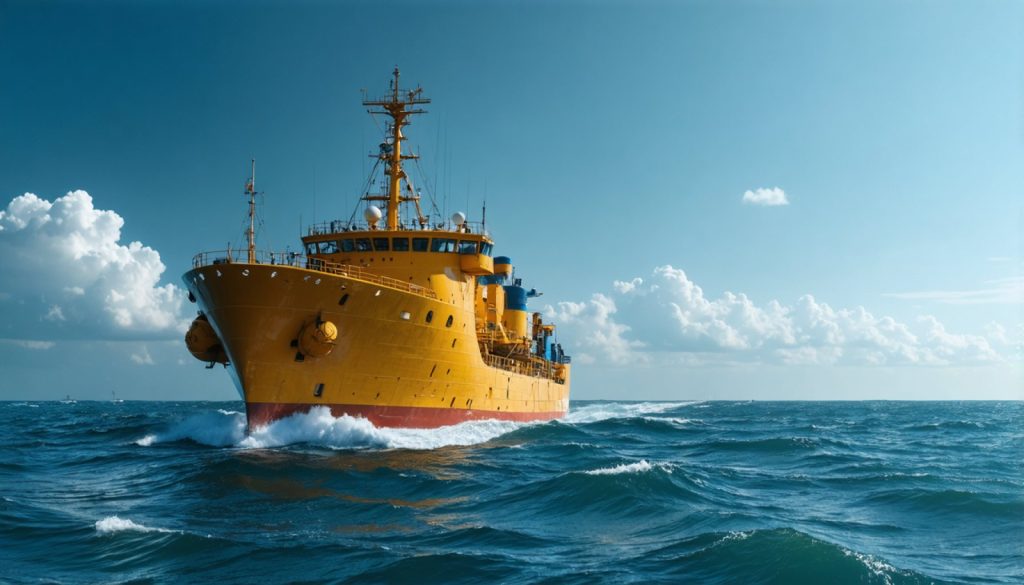
- AI is transforming marine conservation by tackling challenges like oceanic pollution and overfishing through innovative solutions.
- Autonomous drones and robotic systems, empowered by AI, monitor illegal fishing activities and protect marine biodiversity.
- AI technologies enhance the response to oil spills by using real-time satellite data to detect and mitigate environmental damage swiftly.
- AI facilitates the design of effective marine protected areas, supporting environments where endangered species can thrive.
- The integration of AI in marine research uncovers hidden patterns, providing actionable insights for sustainable ocean management.
- AI’s role in marine conservation contributes to healthier oceans, impacting air quality and climate patterns positively.
- Ethical training and deployment of AI systems are crucial to ensure environmental respect and community well-being.
- AI is steadfastly positioning itself in marine conservation, showcasing a future where technology and nature harmonize.
Sailing the azure waters of the globe’s vast oceans, one might not immediately imagine the intricate dance of technology occurring beneath those serene waves. Artificial Intelligence (AI) has embarked on a maritime journey, a modern-day odyssey reshaping how we protect and understand our oceans.
On the frontlines of this digital seafaring adventure, AI-driven solutions are tackling one of the most pressing challenges: marine conservation. The magnitude of oceanic pollution and overfishing is daunting, yet innovators are finding hope in the power of algorithms.
Picture a diligent AI sentinel, tirelessly scanning the foam-crested waters. This sentinel takes the form of autonomous drones and robotic systems, designed to collect data that was once elusive to human researchers. These smart machines scour the waters, identifying illegal fishing activities with precision. With capabilities to differentiate between fishing vessels and commercial shipping, AI ensures the protection of marine biodiversity that is vital for ecological balance.
Delve deeper, and you’ll find AI technologies guiding efforts to combat the calamity of oil spills. Armed with sophisticated imaging tools, AI models analyze satellite data in real-time, detecting spills the moment they occur. Their rapid alerts enable a swift response, considerably minimizing environmental damage and saving countless marine life forms.
Beyond surveillance, AI is mesmerizing as an orchestrator of data symphonies, transforming the cacophony of raw data into actionable insights. Scientists, interweaving AI’s analytical prowess with traditional marine research, uncover patterns and trends that were previously hidden beneath the depths. This holistic approach facilitates the design of more effective marine protected areas, fostering environments where endangered species can thrive unimpeded by the dangers above.
But how does this impact us? Imagine a future where seafood remains a sustainable choice, where the gentle giants of the deep swim safely in undisturbed sanctuaries. AI’s persistent vigilance at sea contributes to healthier oceans, directly influencing the air we breathe and the climate patterns that dictate our everyday weather.
Embracing these advancements necessitates a concerted human effort to support and refine these intelligent systems. Training and deployment must be ethical and thorough, ensuring AI adheres to principles that respect both our environment and global communities.
The clear takeaway? AI has anchored itself firmly into the world of marine conservation, promising an era where technology harmonizes with nature. As we harness these innovations, we sail into a future where ambition and responsibility coalesce, steering humanity toward a horizon of sustainable progress.
With the oceans presenting 71% of our planet’s canvas, AI is not merely a tool but an artist crafting the portrait of tomorrow’s seas.
Unveiling the Hidden Ocean: How AI is Revolutionizing Marine Conservation
The marriage of artificial intelligence (AI) and marine conservation is not just an answer to a growing environmental crisis; it is a pioneering step into an unexplored frontier where technology synergizes with nature to restore balance and vitality to our oceans.
How AI is Revolutionizing Oceanographic Exploration
The implementation of AI in marine environments is multifaceted. Here are some critical developments and applications:
1. Smart Drones and Robotic Systems
Technological Features: Modern autonomous drones and robotic systems are equipped with advanced sensors and imaging technologies. They capture high-resolution images, detect irregularities, and map ocean floors with precision that prior manual methods couldn’t achieve.
Use Cases: These AI-driven machines monitor illegal fishing, save invaluable time for human researchers, and enhance the precision of data collection.
Real-World Example: The U.S. National Oceanic and Atmospheric Administration (NOAA) employs unmanned systems to monitor coral reefs, assess storm damage, and track whale migrations.
2. Real-Time Pollution Monitoring
AI Imaging Tools: AI platforms analyze satellite images to identify oil spills and other pollutants instantly. This capability enables a proactive approach to managing oceanic crises.
Impact: Rapid detection reduces the impact of oil spills by ensuring immediate cleanup efforts, minimizing harm to aquatic life, and mitigating long-term ecological damage.
Predictive Analytics in Marine Research
AI transcends traditional data processing by integrating vast datasets from different sources to forecast future patterns and detect anomalies. This predictive capability is crucial in:
Habitat Design: Machine learning algorithms contribute to the design of marine protected areas by predicting how ecosystems will evolve and identifying the most critical zones for conservation.
Climate Research: AI models simulate climate scenarios using historical and real-time data, providing insights into potential weather changes induced by ocean conditions.
Challenges and Ethical Considerations
The integration of AI into marine conservation efforts is not without its challenges:
Data Privacy and Security: Safeguarding the collected data from breaches is crucial, particularly due to the geopolitical sensitivities involving maritime boundaries and resources.
Ethical Deployment: Ensuring that AI systems do not disrupt existing marine life or cause harm beyond the predicted scope of their operation requires continuous oversight.
Human Oversight: As AI systems grow more autonomous, continuous human oversight ensures they adhere to ethical standards and environmental regulations.
Future Trends: Insights and Predictions
Looking ahead, several trends are emerging in the AI-marine conservation space:
Increased Collaboration: Partnerships among governments, NGOs, and tech companies will expand to leverage shared data and resources.
Enhanced AI Capabilities: Innovations in AI systems are expected to make them increasingly self-sustaining, requiring minimal human intervention.
Sustainability Metrics: New metrics for analyzing the impact of AI interventions on marine biodiversity and sustainability will develop, providing clearer insights into progress and areas for improvement.
Actionable Recommendations
To maximize the benefits of AI in marine conservation and drive sustainable oceanic practices, consider the following:
Support Initiatives: Engage with and support initiatives dedicated to AI-driven environmental research to drive further innovation.
Stay Informed: Follow developments in AI and marine research to understand how these advancements can benefit broader environmental protection efforts.
Advocate for Policy: Encourage policies that promote ethical AI use and protect oceanic habitats from exploitation.
As AI continues to emerge as a cornerstone of marine conservation, we must also be stewards of the practices and ethics that guide technology’s integration with nature’s delicate ecosystems.
To learn more about advancements in AI and technology, explore NOAA and other reputable sources for the latest updates and insights.



